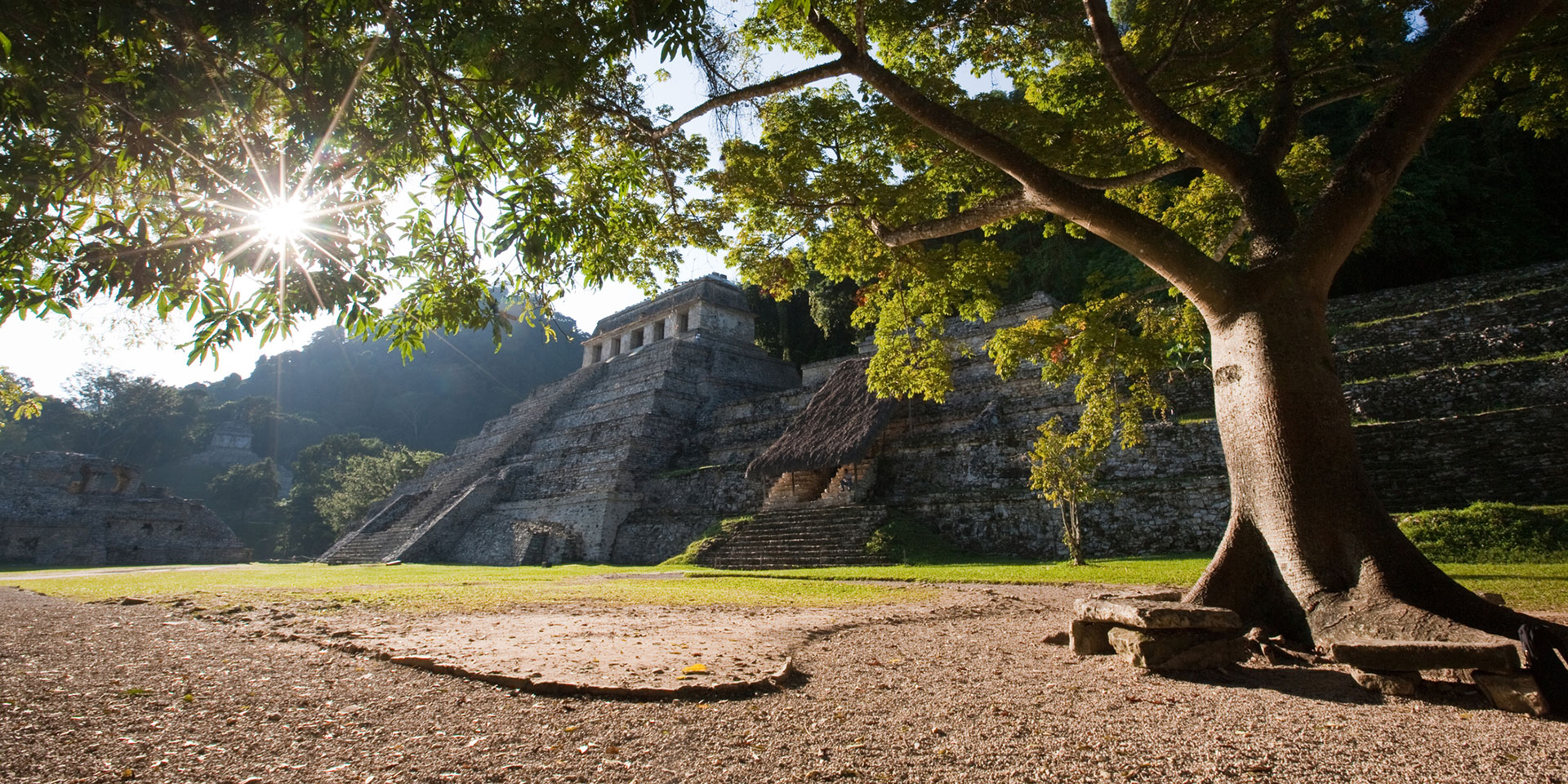There are numerous places throughout Mexico where you can learn about the country’s rich and complex past.
Be it ancient sites that are full of mystery, places that witnessed the clash of beliefs and customs of Europeans with the indigenous peoples, or locations of military conflict that changed the course of history, there’s no better way to learn than by visiting some of the settings of these significant events.
Here are five places in different regions of Mexico where you can live and breathe the country’s history and get more insight into the people, places, and events that shaped this nation.
Palenque, Chiapas
There are hundreds of archaeological sites throughout the country, but Palenque is an outstanding one in the far south of Mexico, in the state of Chiapas. Still partially submerged in jungle, it maintains an air of intrigue, but its buildings, monuments, and intricate sculptures attest to the Maya civilization’s advances in art and architecture.
The lengthy inscriptions on the walls of some buildings speak of the dynasty of rulers who governed Palenque and their rivalries, alliances, and accomplishments.
This was one of the most powerful cities of the Classic Maya and was an influential trade center, with commercial connections extending to El Tortuguero in the state of Tabasco, and Tikal in Guatemala.
Palenque was abandoned sometime around 900 CE, and the jungle gradually reclaimed it until archaeologists began excavating the site in earnest in the 20th century.
San Juan de Ulúa, Veracruz
Veracruz, in the Gulf Coast region, has been one of Mexico’s most important port cities for nearly 500 years. The historic fortress of San Juan de Ulúa is located on an island within the Veracruz harbor, which is now connected by a causeway to the mainland.
Construction began in 1535 as an effort to protect the valuable shipments arriving and departing from the port from pirates. It was built upon a coral bank and is mostly made of the same material.
San Juan de Ulúa played a vital role in several armed conflicts, including Mexico’s War of Independence and the Mexican-American War. It also served as a prison up until 1916, after which it was used as the national arsenal.
The impressive complex is comprised of fortress structures, the prison, and a former palace, which now houses the Archaeological Museum of Veracruz.
Casa Montejo, Mérida, Yucatán
There are many Maya archaeological sites in the Yucatán Peninsula, but the city of Mérida, capital of Yucatán state, is home to a fascinating building that gives us a glimpse into the period of the conquest.
Francisco Montejo, who held the title “Adelantado of Yucatán,” ordered the construction of Mérida on the ancient Maya city of T’Ho. He had his own home built on the south side of the central plaza in 1542. The original building occupied the whole block, but today only one section of the original structure remains.
The facade, in the Plateresque style, makes reference to the conquest of the Maya people, and also has depictions of members of the Montejo family. The Banamex foundation purchased and restored the home in the 1980s and it opened as Museo Casa Montejo in 2010.
The museum contains some rooms that have been furnished in the style of a wealthy family of the 18th century; there also temporary exhibits featuring contemporary photography and other media.
Alhóndiga de Granaditas, Guanajuato
The Mexican independence movement began in 1810 in the central Mexican state of Guanajuato.
The Alhóndiga de Granaditas, a public grain storehouse dating to the late 18th century, is located in the center of the state capital, Guanajuato City. The building looks like a castle or a fortress, making it a prime site for one of the first and most important battles in the War of Independence.
Several hundred royalist fighters barricaded themselves inside when rebels led by Miguel Hidalgo attempted to take Guanajuato on September 20, 1810. The rebels won, although it would be another 15 years before Spain officially granted Mexico its independence.
The Alhóndiga is now home to the Regional Museum of Guanajuato, and contains some edifying murals by José Chávez Morado depicting the confrontation, as well as other scenes from Guanajuato’s history.
Quinta Luz (Museo Histórico de la Revolución Mexicana), Chihuahua
One of the most interesting historical places to visit in northern Mexico is the former home of revolutionary Francisco “Pancho” Villa. Known as Quinta Luz, the home gets its name from Villa’s wife, Luz Corral. Upon her death in the early 1980s, she donated the house to the Ministry of Defense with the stipulation that it be made into a museum honoring the Mexican Revolution.
Here, you can learn about the revolution and Villa himself, one of the major figures of Mexican history, regarded by some as a bandit and outlaw, and by others as a great hero. The museum contains some of Villa’s personal belongings, including the car he was riding in when he was assassinated in 1923, and weapons, documents, and other artifacts from the period of the Mexican Revolution.




